Chapter4
Homecoming of the treasured trouts
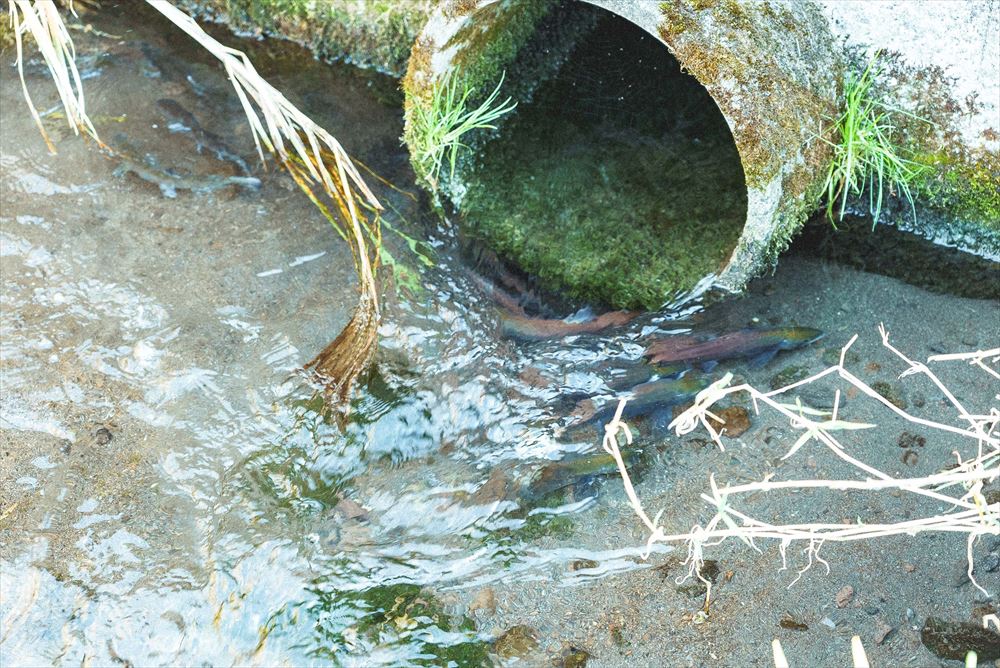
A transfixing scene lay before our eyes.
In a small stream no wider than 1.5m and no more than 30 centimeters at its deepest, vermilion streamers were flitting about, their dorsal fins visible from the water’s surface in the shallows. They were heading upstream, sometimes in a threatening gesture to each other.
The scene reminded me of a film I once saw about the northern countries.
“The healthier the male, the stronger the nuptial color, and the so-called “seppari,” a raised area in front of the dorsal fin, appears more strongly,” explained Tatsuya Fukui, the head of the Lake Ashi Fishery Cooperative Association, caringly gazing at the fish coming up the river vigorously.
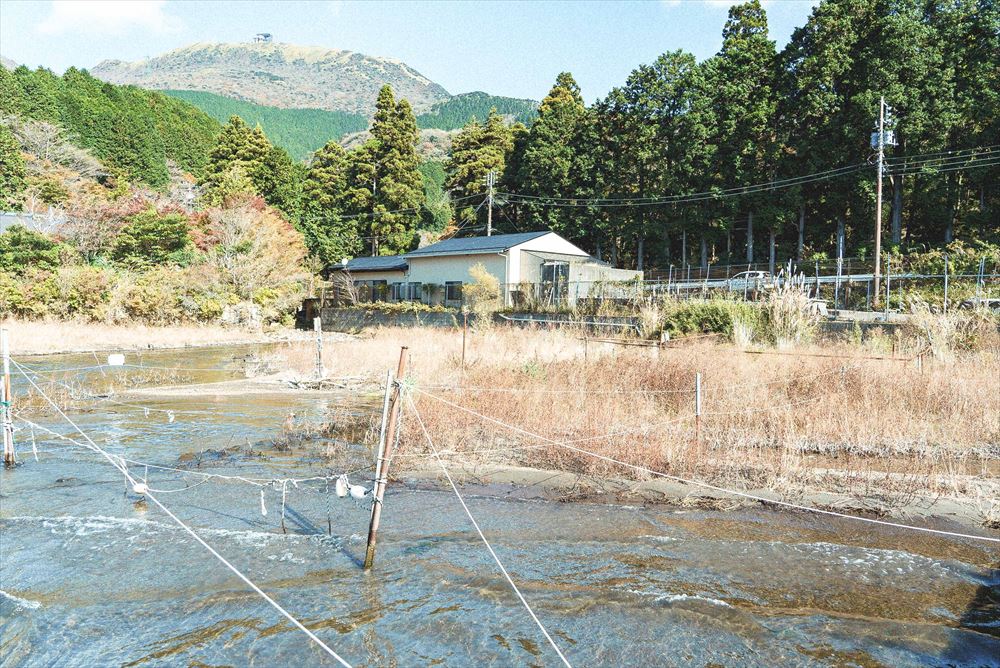
Hirukawa fish farm is located on the shores of Lake Ashi. The stream where the kokanee trout runs upstream flows quietly through the grasslands. This year, the water level was lower than usual, so the grass grew vigorously and hid the stream. “This protects the kokanee trout from birds such as egrets.”
Lake Ashi is 723 meters above sea level in the Hakone Mountains of Kanagawa Prefecture. With its excellent water quality and ideal location near Tokyo, Lake Ashi has been releasing salmon and trout since World War II. The landlocked kokanee trout (kokanee salmon, known as Hime-masu in Japanese) has been released intermittently since 1909. The Fishery Cooperative has established a method of egg collection and hatching through trial and error over the past ten years.
“Out of the numerous salmon and trout species, the kokanee salmon is said to have the highest rate of returning to its native river.”
After spending up to one year in the Hirukawa Fish Farm, the trout are released into Lake Ashi, where they spend two years or so. In their third autumn season, they will return to the Hirukawa river, which runs through the fish farm, to sperm. However, the small size of the Hirukawa river does not provide an environment where they can spawn naturally. Therefore, the Fishery Cooperative conducts artificial egg collection and fertilization. “All the kokanee trout living in the lake for the past ten years have come from here.”
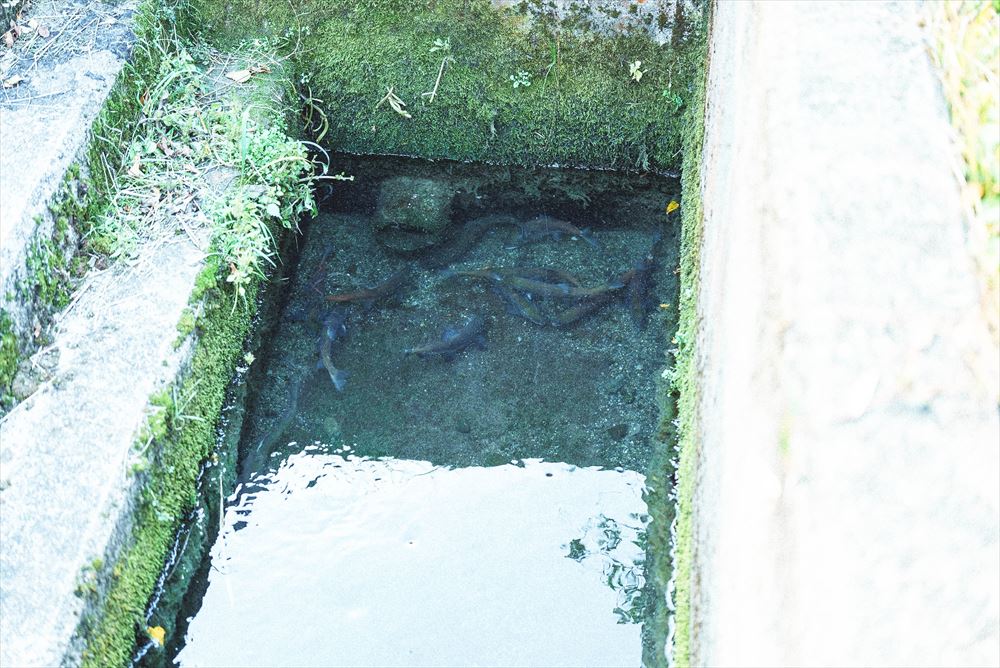
The Fishery Cooperative also conducts artificial egg collection and fertilization of smelt (wakasagi in Japanese). (For details, see #1 “The Lake Ashi Fishery Cooperative’s efforts to protect nature and promote the attractions of Lake Ashi”.)
While the prolific smelt is kept alive when harvesting eggs to protect resources, the kokanee trout, which spawn only once in their lives, do not survive after spawning. The Lake Ashi Fishery Cooperative Association uses the incision method (cutting open the fish’s stomach to extract the eggs). This is more labor-intensive but does not waste even a single egg and increases the fertilization rate, instead of the easier extraction method of applying pressure to the fish’s body and squeezing out the eggs.
“It is said that fish remember the smell of this river and return to spawn here.”
The fish, clad in a certain elegance, like the cinnabar used in Japanese clothing, come to the river’s upper reaches with absolute determination. Some of them have sores on their skin. The body’s immune system is weakened by using up its nutrition on the ovaries and testes, resulting in mold forming on the skin. Both males and females secrete a strong, greasy coat on their body surfaces to protect them from being rubbed against pebbles in the shallow river.
“Kokanee trout are sensitive to high temperatures. During this time of year, when they do not engage in spawning behavior, they live at a depth of about 18 to 25 meters in a water temperature range of 8 to 12°C. However, they are temporarily resistant to high water temperatures during the spawning season and can withstand 18 to 20°C, which would usually kill them instantly. Today the lake’s surface is 15.3°C. So it is not a comfortable water temperature for them.”
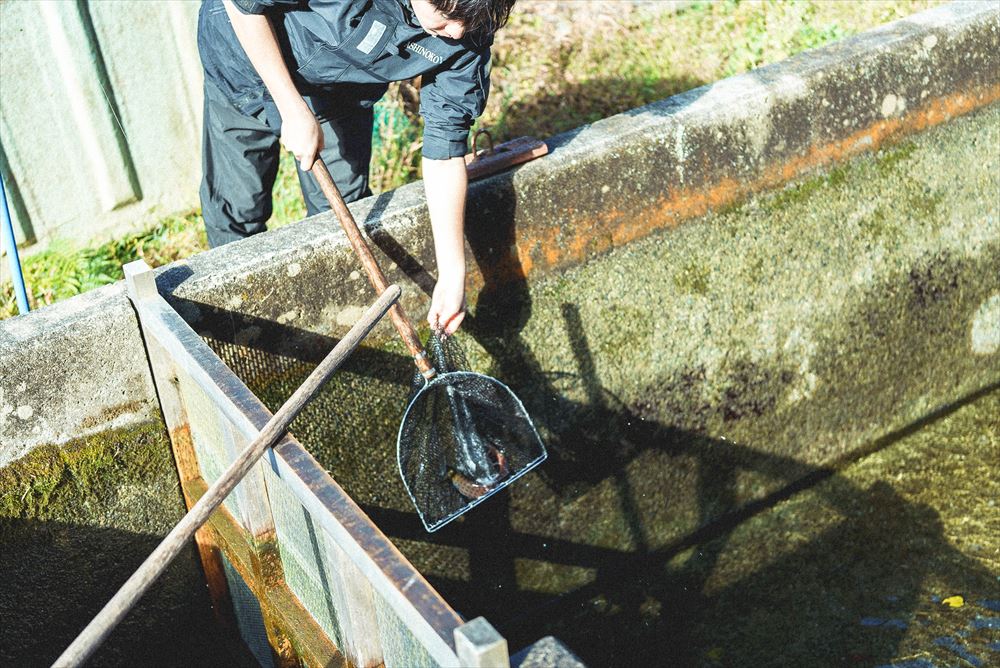
The small stream of the Hirukawa river leads into a fish passage of the fish farm, where males and females in their prime spawning season continue to move upstream one after another. Capturing kokanee trout is done with hand nets.
The spawning kokanee trout changes its body and color and endures high water temperatures to reach its natural habitat, led by its instinct for preservation. Human lives, which have become increasingly complicated and cut off from nature as we seek higher goals, share the same instinct.
“I’ll start the egg collection process,” Tatsuya glanced towards the water as he returned to the fish farm. A fisherman was standing in the lake, swinging his rod.
In the fishpond in the workshop, male and female trout were swimming vigorously. “This year, the trout are in good size,” said Yosuke Yuki, a cooperative member, while patting the stomach of a female trout. The reason for patting the stomach is to check the maturity of the eggs. If the eggs are hard to the touch, they are “stringy” and have a low fertilization rate, so they are returned to the fish tank. The mature females are selected and stunned in advance. Even in this way, the eggs remain alive for about an hour. Stunning is to prevent the fish from getting out of control when the incision is made.
Tatsuya gently held the female fish with both hands while Yosuke, standing across from him, inserted the blade of his knife. The fish is about 30 centimeters long and holds 300 to 350 eggs, with 500 eggs in a 40-centimeter-long fish.
Eggs placed in a colander are rinsed in an isotonic solution with a salt concentration of 1%. The reason for using a 1% salt solution is to prevent the eggs from absorbing water due to osmotic pressure. If eggs are washed with fresh water, they absorb water and cannot fertilize.
Then, Tatsuya picks up the next female, and Yosuke inserts the blade. Nearby, Hiroshi Yamaguchi wipes the colander with a towel. The whole process has a seamless flow. Looking closely, you can see that Tatsuya carefully wipes each fish with a towel, and Yosuke wipes his knife after each fish.
“After this, the male sperm is poured over the egg. When the sperm comes in contact with fresh water, it becomes active in less than one minute. That’s why moisture is our worst enemy.”
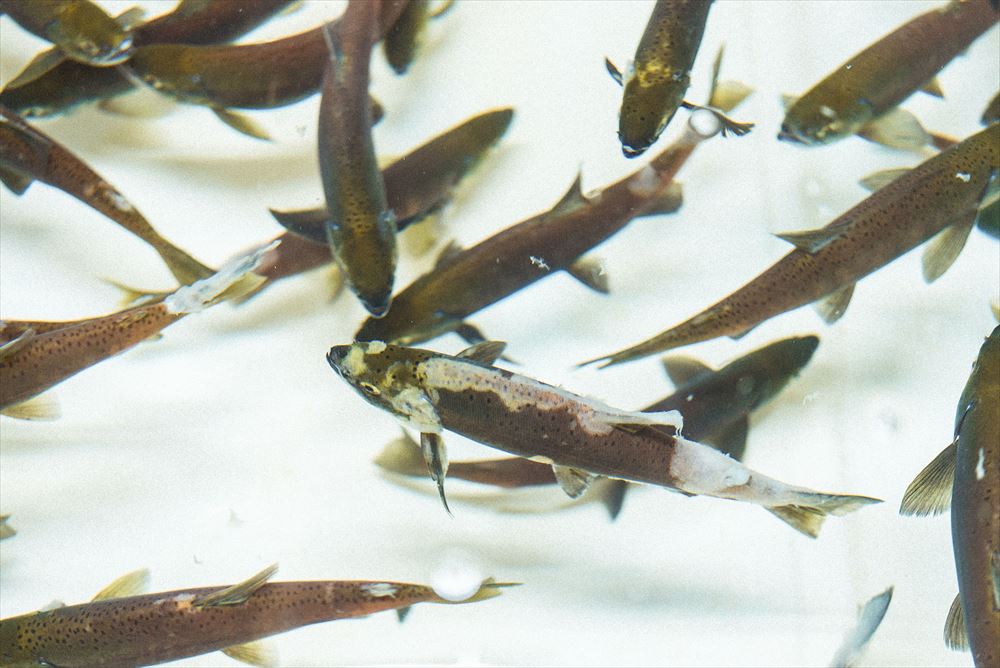
A male kokanee trout swims in a fishpond. It has survived the high water temperatures and made its way upstream. Some of them are covered with sores on their skin due to the nutrients their testes take. Lake Ashi is home to more than ten species of fish, some of which prey on other fish, such as largemouth bass. However, the lake, which is 44 meters deep at its deepest point, has a wide range of water temperatures. Each species lives at its appropriate water temperature, allowing the various species to coexist in a well-balanced manner.


Females have a rounded head and dark body, while males have a pointed face, raised back, and a strong vermilion nuptial coloration.
The work proceeds in a tense atmosphere, interspersed with the occasional word or two. Tatsuya gently holds the fish while Yosuke inserts the blade. I wonder if their roles ever change. Tatsuya replies, “I have had other workers hold the fish, but the blade enters the fish slightly differently, and sometimes the fish bleed. It might be because I am used to working with Yosuke, our cooperative leader.”
If the eggs come in contact with blood, the fertilization rate will drop. He brushed off the idea of the three staff working together, each with a knife to speed up the process. “The accuracy of egg retrieval is most important for us, and it is enhanced when each of us has a role to play in the process.”
When Tatsuya and Yosuke first began collecting eggs of kokanee trout, the skills and methods were not passed down when senior staff members passed away. There were times when they were at a loss, faced with dead eggs that had turned completely white.
Once the team collected the eggs, they removed the healthy male trout from the coop. After wrapping the fluttering life in a towel to calm it down, he squeezed the fish’s body tightly and sprinkled the egg with sperm. The colander full of eggs now had two to three fish sperm added. “The reason we add sperm from multiple fish is to maintain a high fertilization rate without being affected by sperm conditions.”
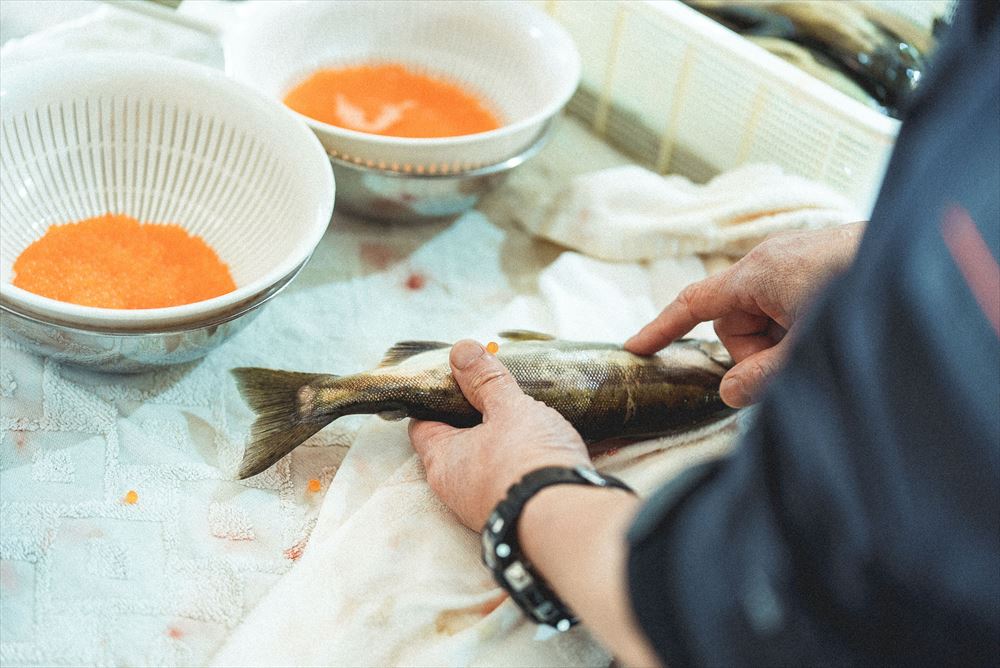
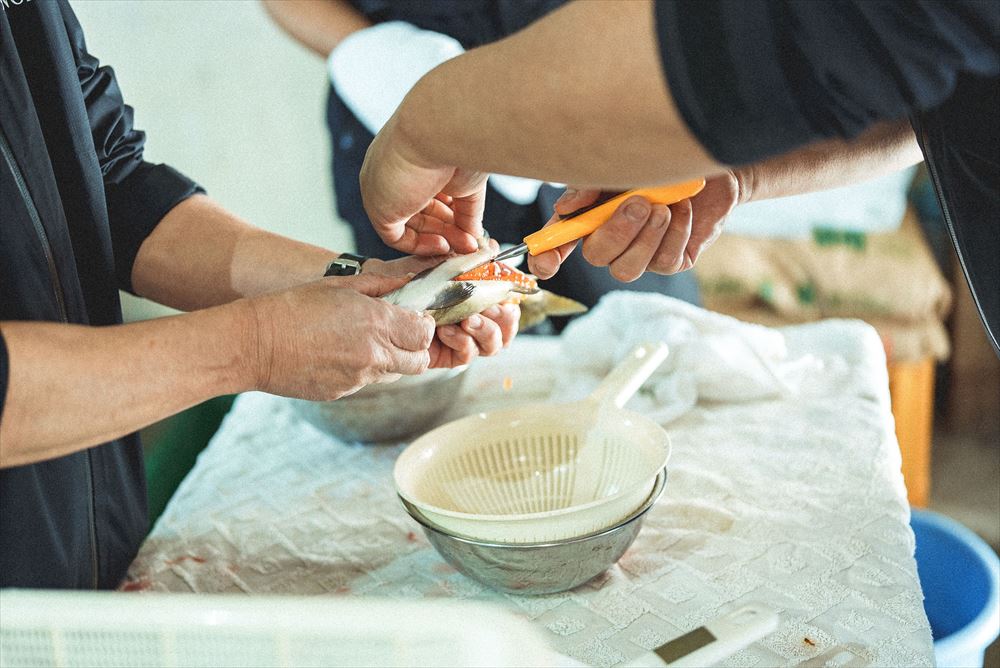
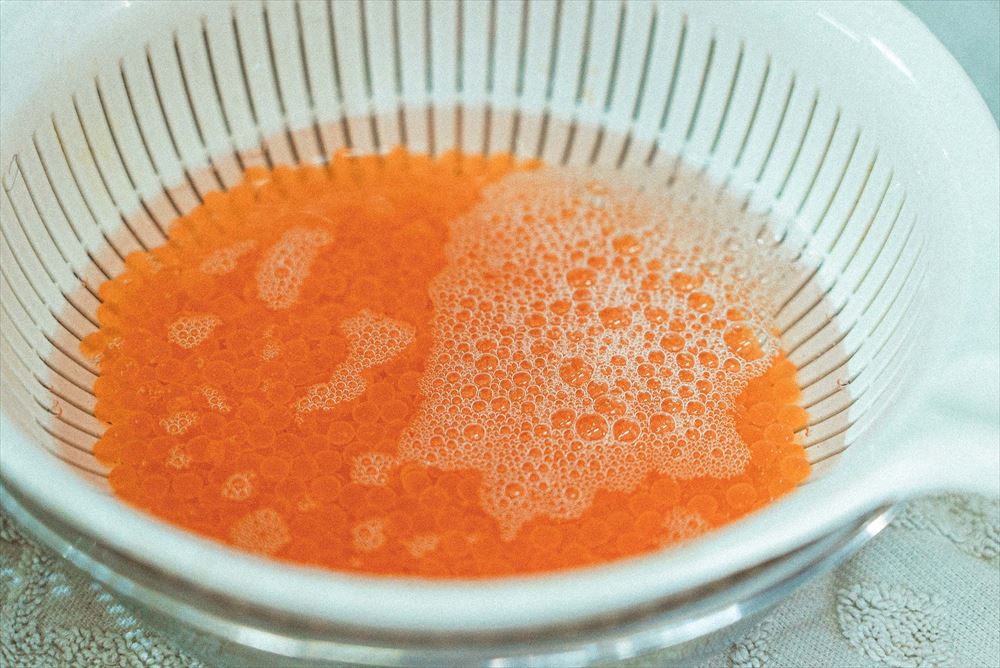
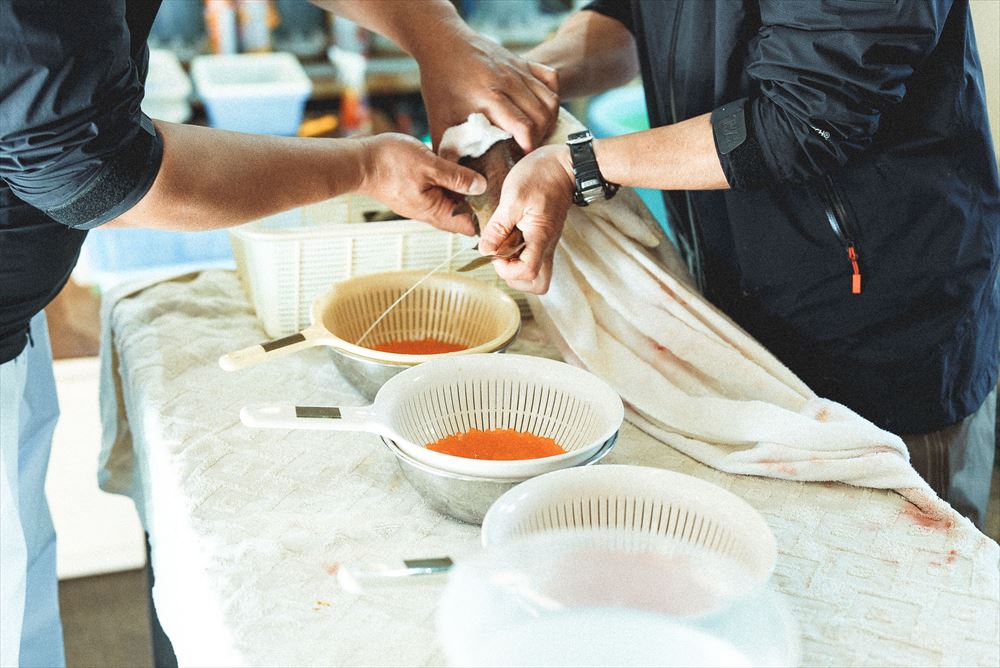
The maturity of the eggs is checked by tapping the stomach before cutting the female open. If the eggs are firm, they are returned to the tank. When the knife blade is inserted, the eggs spill out and are placed in an isotonic solution with a salt concentration of 1%. The eggs are then poured over with the sperm of two or three males. The workflow is beautifully efficient.
As I watched them work together, I noticed that the flesh of the male was redder than that of the female. “The female’s flesh is white because the eggs carry all the nutrients. Red meat means that the male still has more nutrients and is tastier. This is probably why all traditional Niimaki salmon (salt-preserved salmon) are made from male salmon.”
As he explains, Hiroshi feeds a male fish after sperming it to “Nebosuke,” a cat that watches the process from the doorway. “Nebosuke is such a gourmet cat that he eats only the meat and spits out the head when we give him smelt. That’s why he only eats the male kokanee trout, too.”
I have become keenly aware of the staff’s deep love for fish through my three visits to Lake Ashi Fishery Cooperative Association. This is clearly evident in the manner in which the fish are handled. They gently cut open the stomach without wasting even a single roe and wipe the fish with a towel to not allow even a drop of moisture. Even when handling tiny smelt, they have the same frame of mind. They are always mindful of showing respect for the life of fish.
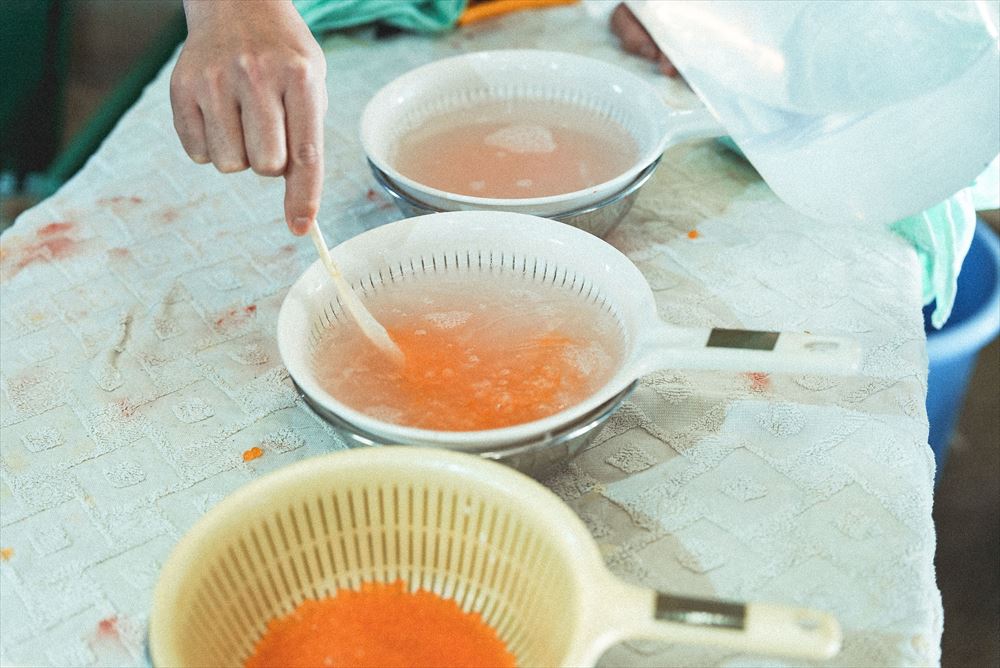
The eggs are gently stirred with sperm using a swan feather that has been used for 30 years.
“We have been wondering how to make the best use of the fish, even if it were only males after spawning. …… The fish that have reached spawning season inevitably tend to have drier flesh. Therefore, we are working with a fish processor in Numazu to produce marinaded fish. The marinade is well-flavored and tastes good.”
Then, Tatsuya took out a feather of some kind and began mixing the eggs with sperm to fertilize. “This is a swan feather I have been using for about 30 years. At that time, swans came to Lake Ashi over winter, so I picked them up and used them. If these were crow feathers, they would be too stiff. The balance of softness and firmness is just right for mixing eggs.”
The fertilized eggs eye-up in about one month. The total temperature for eye-up is about 320°C. The water temperature at Hirukawa Fish Farm is 13.7°C, so it takes about 23 to 24 days.
“The hatched fry gets nourishment from the umbilical sac (pouch containing the egg yolk). When the total temperature reaches 1,000 to 1,200 degrees Celsius (73 to 88 days), the umbilical sac disappears, and we start feeding them.”
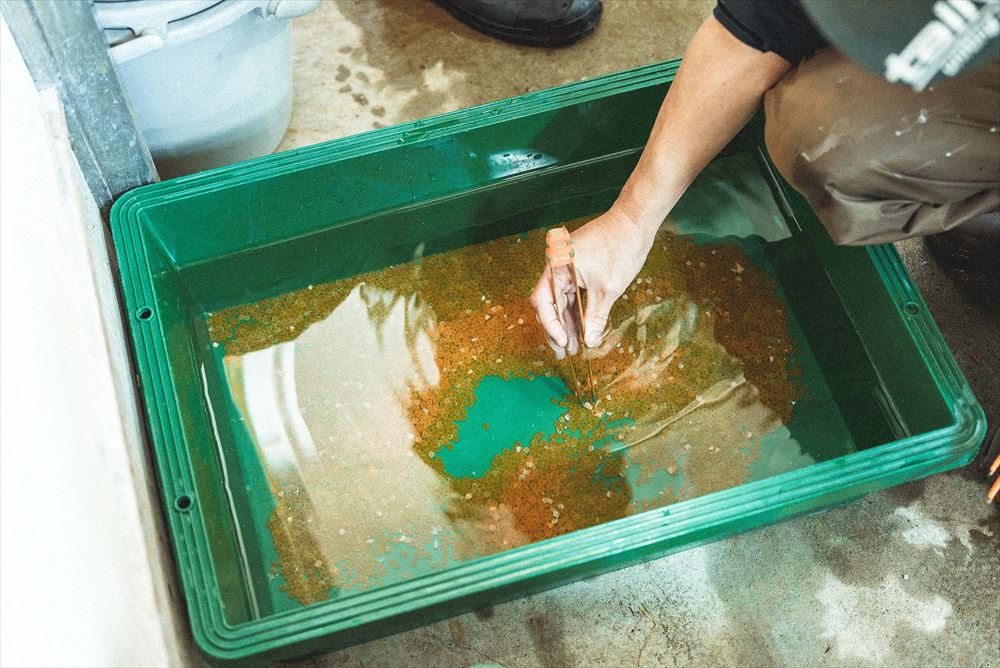
At this point, dead eggs (white eggs) are carefully removed to prevent mold development. Tomonari Oba, a member of the cooperative, made the special egg tongs.
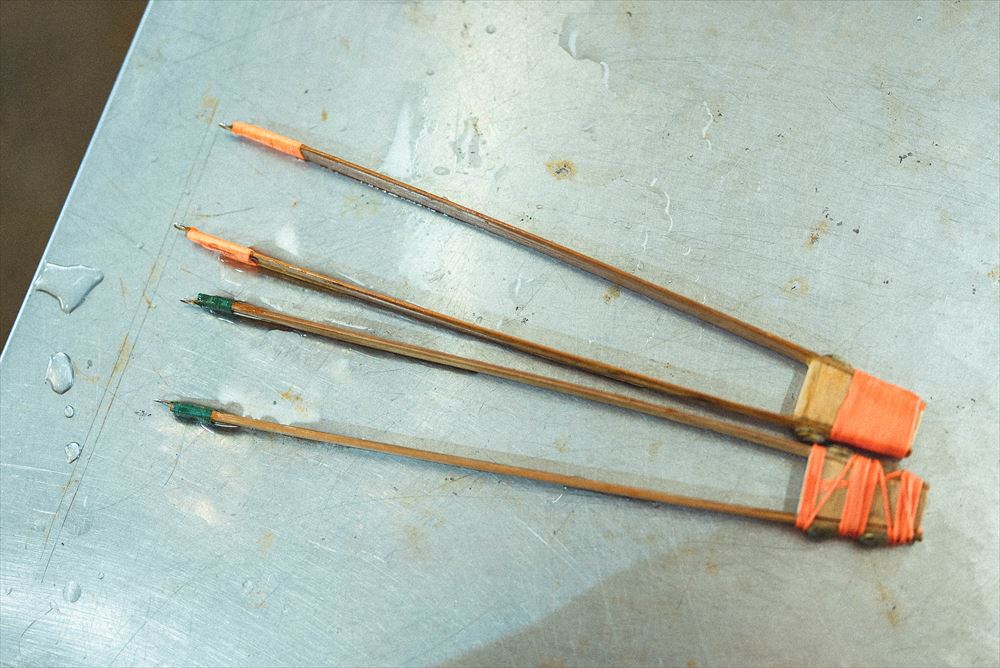
“He first tried making them out of aluminum to prevent rusting but later settled on bamboo because it has a nice elasticity. It takes more than a month to make, so he asks us to continue using the ones we have here," says Yosuke, a classmate of Tomonari.
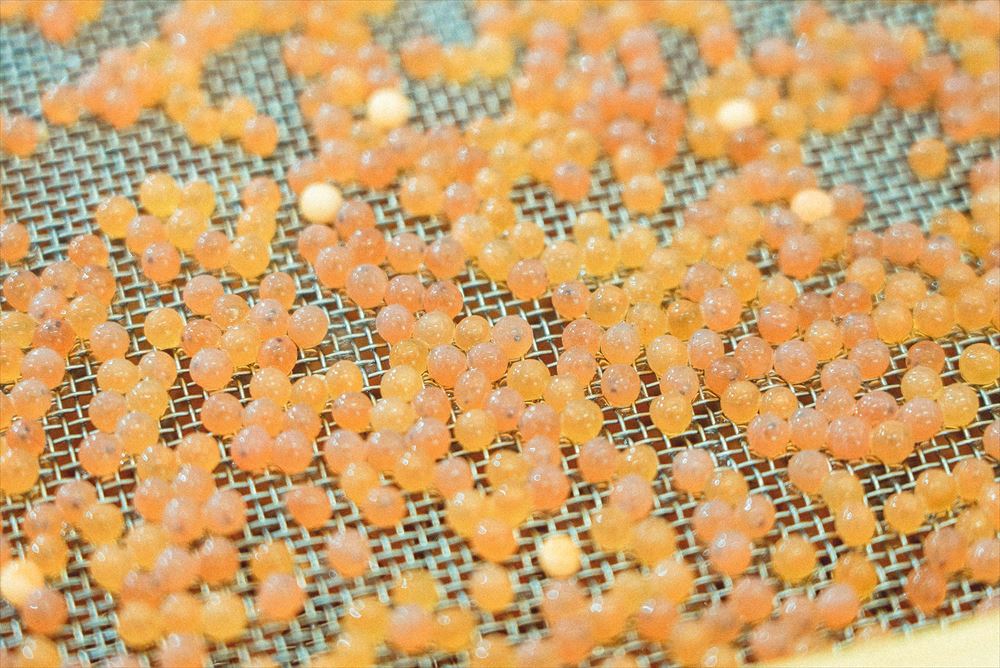
By springtime, the trout would have grown to about 15 grams. They are released once at this point and then again in the autumn after they have grown to about 50 grams. “The two separate releases are to prepare for risks such as disasters. We do not release all the fish at once in case a typhoon or natural disaster destroys the fishery or ecosystem of Lake Ashi.”
Similarly, the Fishery Cooperative purchases fertilized eggs from Hokkaido and Yamanashi Prefectures and raise them with eggs from their lake. “This is also a risk management measure in case something unexpected happens. Last year, egg production was lower than ever in Japan, and our lake had a bad year too, but the eggs we purchased helped us out.”
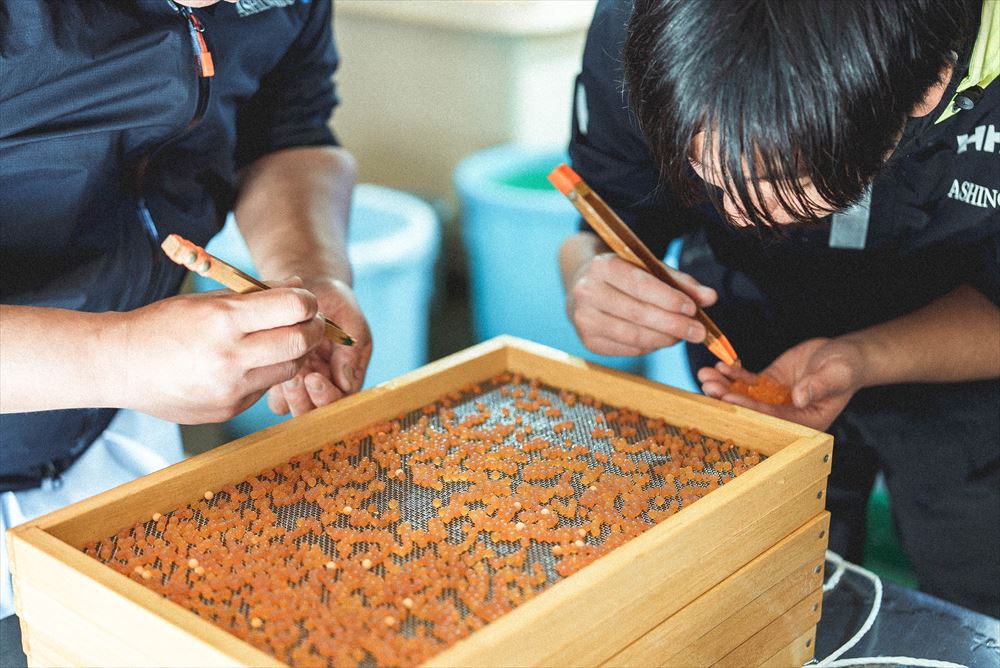
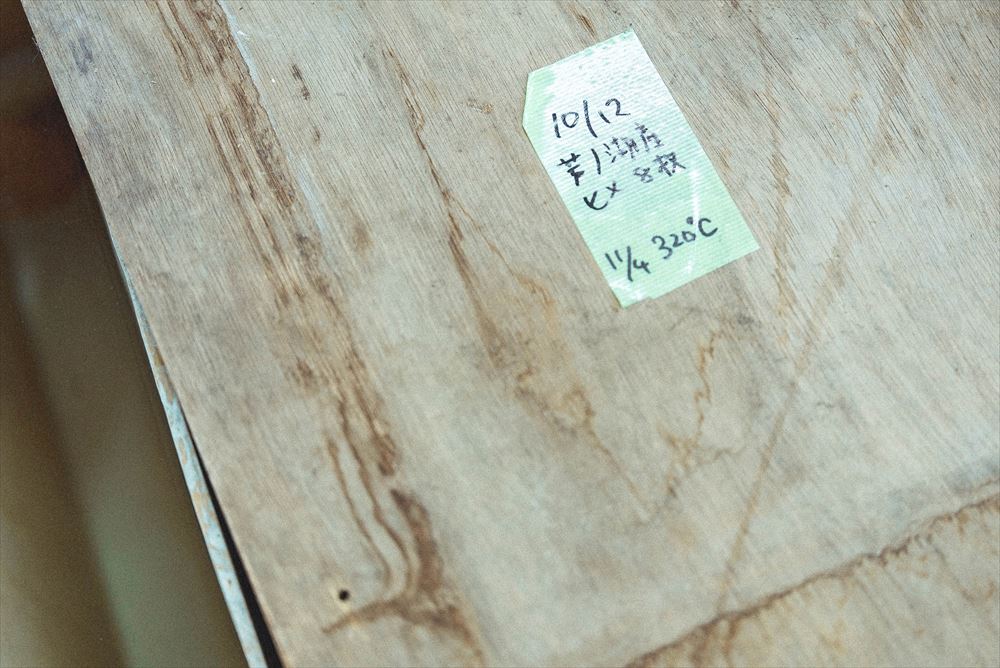
Eggs accumulated at temperatures exceeding 320°C show a dark-colored eye-up. Again, dead eggs are removed at this stage. “This is the hardest part of the process,” says Hiroshi with a wry smile.
A few moments into the second egg collection process, Yosuke shouted out. The fish in his hand contained a white mass in addition to eggs. It was a hermaphrodite with eggs and testes. “The female of the kokanee trout turns male when the water temperature rises above 12°C. It is a unique phenomenon. Some females turn male while retaining the female’s genes, so to speak, becoming a false male. When the sperm of these false males are crossed, all the newborn fish become females.”
The kokanee trout is a predominantly male species. Only around ten per cent of the 2,000 fish caught this year were females. “That means they are a species that could become extinct if global warming continues,” Yosuke added. “That’s why ‘false males’ are so valuable.”
The kokanee trout is sparsely distributed even worldwide. The cooperative members’ love and care for the kokanee trout may be intended to shed a ray of light on this situation.
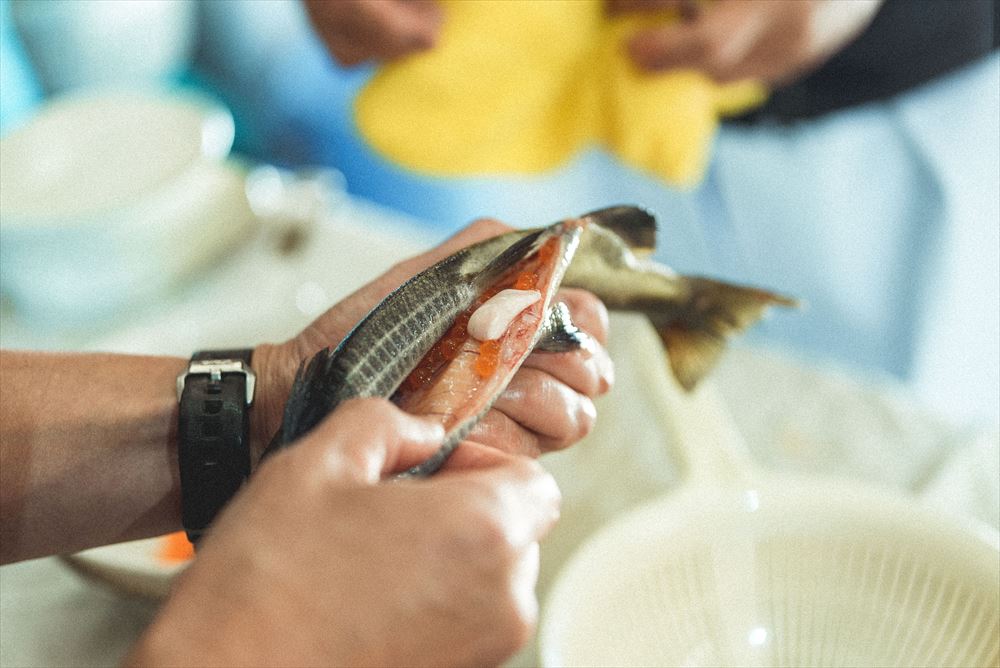
A male with the genes of a female that has both eggs and testes (white part). The reasons behind their change are yet unclear.
As I was thinking about this, Hiroshi groaned. I saw an odd object, like a parasite protruding from inside the body of a 45-centimeter-long Satsuki trout. “It is a plastic worm. They eat these worms caught on the lake’s tree roots. Then their intestinal tracts get clogged. This Satsuki trout may look large at first glance, but its lack of height compared to its length shows its poor nutritional condition due to the malfunctioning intestinal tract,” he explains.
The Satsuki trout, which ate about five worms, gave out a sickly oil smell. Naturally, the eggs held in their stomach have a low fertilization rate, and this smell seeps into their flesh, making them inedible.
“We have been releasing fry for Cherry trout for 21 years and three years for Satsuki trout. During this time, we have seen a fish that had swallowed more than 20 worms.”
Yosuke adds that they are fortunate to have caught the fish with the worm. “When a fish that has eaten a worm dies in the lake, its body decomposes, but the worm remains, and another fish may eat it. If a bird eats such a fish, it would be a problem for the entire natural world around Lake Ashi.”
Lake Ashi has banned plastic worms for 22 years, since 2000. The decision to ban the use of plastic worms was met with harsh criticism from both inside and outside the lake community, but the decision was made with the hope that anglers would catch healthy, great fish that would leave them with memories that would last a lifetime. “For example, It is not easy to catch a Satsuki trout of this size in Japan. After all, they are smart fish. It would be extremely disappointing to polish your fishing skills, finally catch one, and carefully take it home to eat, only to find it in this condition.”
Yosuke, who was born and raised in Hakone and who takes pride in his job of protecting the lake and its natural environment, spoke shyly. ” When I see them in this condition daily, I feel like the fish are trying to tell me something.”
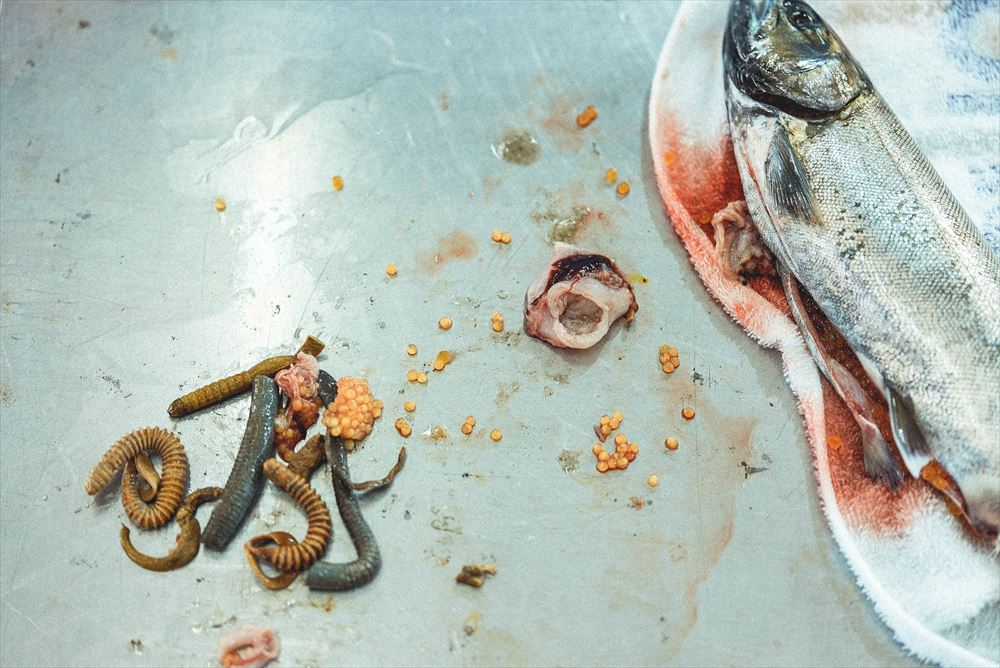
A Satsuki trout that swallowed a worm and clogged its intestinal tract. Eggs from trout that have failed to thrive are not suitable for spawning and are challenging to eat because of their smell.
When I first met Tatsuya, he told me the following story. “The record size for cherry salmon in Lake Ashi was set a long time ago at 70 cm. The current record is in the latter half of 50 cm, but we are working on it to grow to the 60 cm class eventually.”
Hatching eggs with great care and releasing fry into the lake must be more complex than releasing adult fish, which are less likely to be attacked by predators. “Still, the beautiful colors and shapes of the large trout that grows up in the lake from fry and then becomes wild are a moving sight to behold,” he remarks.
The cooperative staff sincerely wish the lake to be a place for such longed-for fish, and they pour their heart and soul into raising fish and protecting Lake Ashi’s natural environment. I recalled the despairing look on Tatsuya’s face when he ran his eyes over the fisherman at the beginning of this visit.
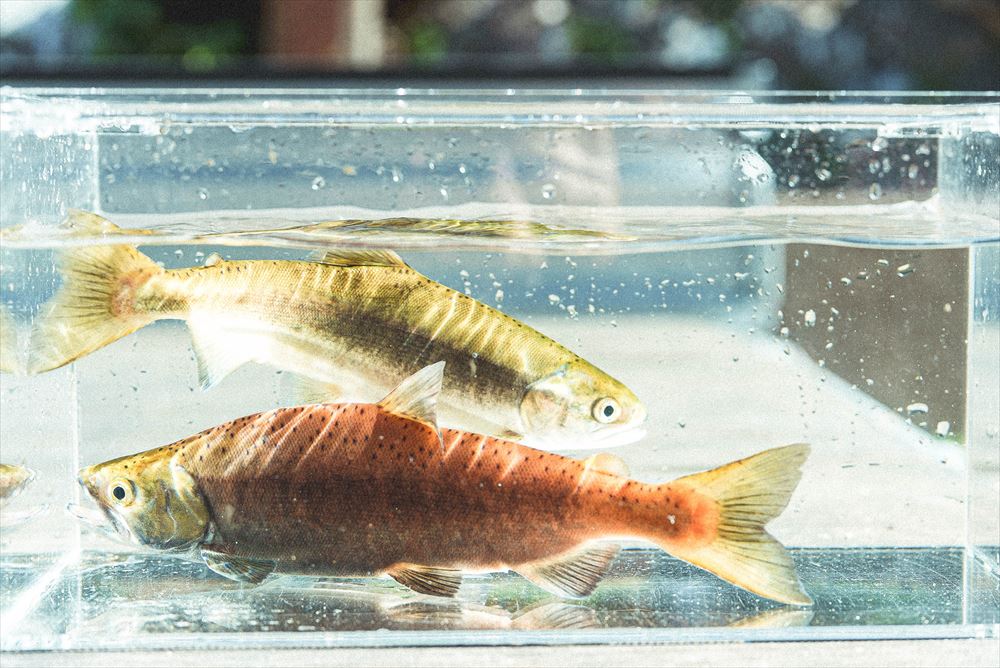
Treasured trouts that have beautifully grown and returned to their birthplace. The one with the reddish back is the male, and the yellowish one is the female.
After spending two years in a lake inhabited by gigantic fish, defending themselves against predators, the trout return to their birthplace to leave their offspring, even if it means changing their body. Even when eggs are collected and fertilized by hand, with careful attention to the smallest drop of water, the rate of eye-up is only about 50%, so natural spawning in running water must be a near miracle.
Over the millennia, people have expanded their sphere of life, and in the process of prospering, they have affected and extinguished many living creatures. As we are now reaping the benefits of this process, it is difficult for us to affirm or deny the current situation. However, we cannot escape our responsibilities for what will happen in the future.
Due to various factors, last year’s run was very low. This year, the run rate is said to have returned to normal, but it will not be easy if they are trapped and blocked in the shallow stream. Again, we are reminded that the kokanee trout in this lake is 100% spun by human hands.
A well-respected elderly writer who loved fishing once included an old Chinese proverb in one of his masterpieces: “If you want to be happy forever, learn how to fish.” Can we still take these words literally?
I am sure that this is not only about fishing. We live in an age where we must pause and think in order to gain something.
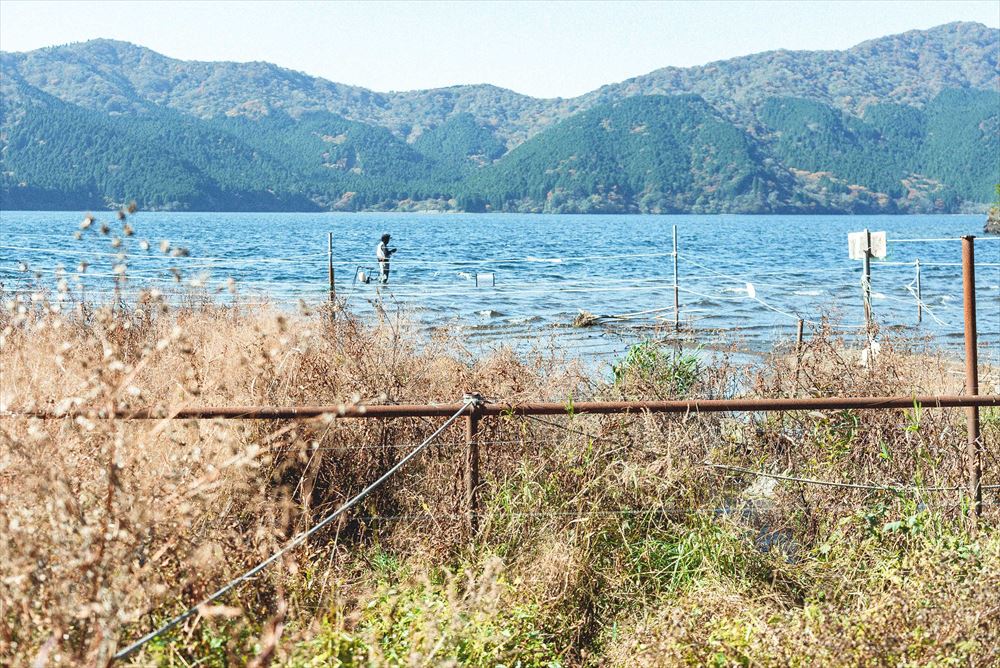
An angler standing in the stream blocking the way upstream. More than 90% of the anglers understand the situation, but a small percentage ignore the restrictions and stand in the stream. We didn't want to put rules on everything, but from the next season, we are planning to make the area a no-take zone.”
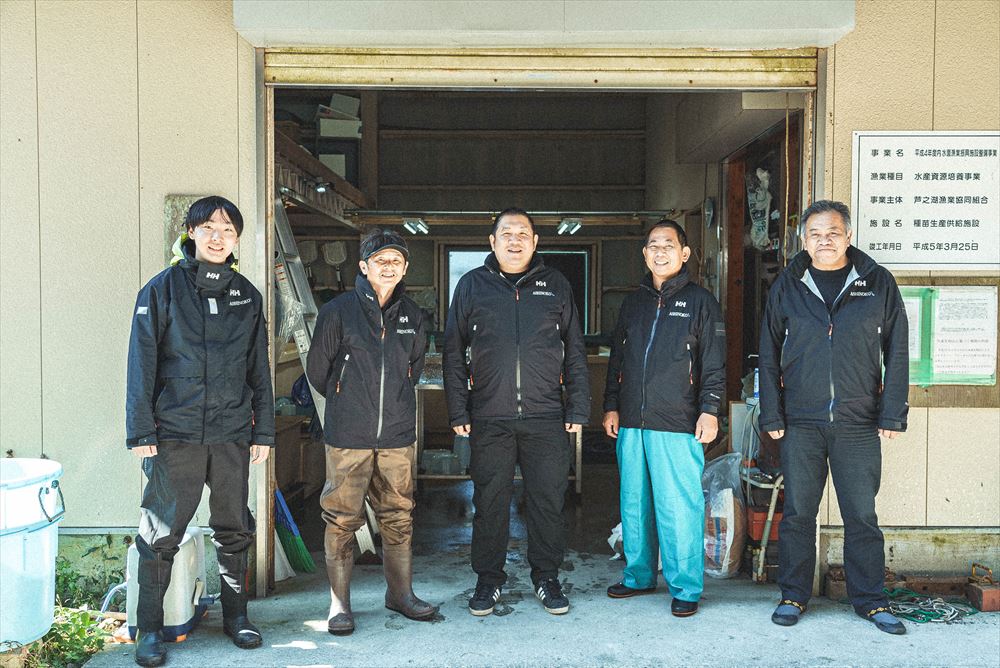
Members of the Lake Ashi Fishery Cooperative Association strive to protect the nature of Lake Ashi and to pass on its charm to the next generation. From left to right: Hiromi Matsui, Tatsuya Fukui, Yosuke Yuki, Hiroshi Yamaguchi, Isoroku Takanashi
Text=Koki Aso
Photo = Masaya Kudaka
Translation = Asaka Barsley
Direction = Shin Kaneko
Interview support =Lake Ashi Fishery Cooperative Association



